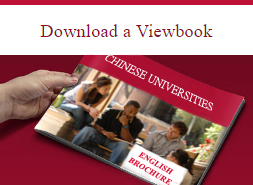
Our History and Tradition
Established in 1958, Youjiang Medical University for Nationalities, grown out of Baise Medical College, has taken the responsibility of shifting the situation of the shortage of doctors and medication in western Guangxi and the minority regions in the southwest of the country, thus, unfolding a historic chapter in higher medical education for the land.
In 1978, the college was upgraded to undergraduate level and renamed to Youjiang Medical College for Nationalities;
In 1982, it was granted the charter to confer bachelor degree;
In 2008, it was graded Excellence in undergraduate education qualification evaluation by the Ministry of Education of China;
In 2010, it was confirmed to be included in the Scheme for Developing Master Degree Authorization Organizations by the Academic Degree Commission of the State Council;
In 2013, it was approved the charter to confer Master degree
In recent years, by utilizing the opportunities arose from the undergraduate education qualification evaluation by the Ministry of Education of China and Scheme for Developing Master Degree Authorization Organizations, the University increasingly invest in facility, optimize educational conditions, deepen teaching reforms, and strengthen governance and management, by which the university has experienced great changes and jumped up to a new step, and earned extensively social praise. “Great Doctor with Sophistication and Honesty” as school motto is to encourage our staff and students to be grand masters with sophisticated medical skills, honest personalities, processing of good characters as well as professional competence, and cleverly combining of life and work.
For half a century, mission and responsibility are firmly borne in our mind generation by generation. By upholding the university spirit of pioneering through arduous circumstances and inexhaustibly self-empowered, we always target on primary healthcare units and minority areas, and deem it as duty to train senior practical healthcare workforce that are willing to go, able to serve, and likely to retain. The university has made enormous and irreplaceable contributions to advance healthcare, economy and society for Guangxi and the nearby regions.
Our Facility and Strengths
The university is located in Baise, the center and pivotal city for the west of Guangxi Zhuang Autonomous Region, bounded Yunan on the westward, Guizhou on the northward, Nanning on the eastward, and bordering Vietnam on the southward. It is a standard university under the administration of Guangxi Zhuang Autonomous Region (Province). It is one of the four medical universities in Guangxi, the only one medical university, higher medical education center, clinical care and research center in the contiguous area of the three provinces. Currently, there are 10,494 full-time students, including 7105 undergraduates, 36 postgraduates, and 3218 vocational students, with 60% minority students, recruited from 18 provinces (regions) throughout China. What’s more, there are 8975 part-time students. The university has completed teaching facilities, and a whole spectrum of modern equipments and devices for scientific research, which value over 300 million RMB totally.
The university consists of 10 faculties, i.e. School of Preclinical Medicine, School of Clinical Medicine, School of Nursing, School of Medical Laboratory Science, School of International Education, School of Public Health and Management, School of Continuing Education, School of Medical Imaging, School of Graduate Studies and School of Pharmacology; and 4 departments, i.e. Department of Stomatology, Department of Foreign Language, Department of Physical Science, Department of Social Science, etc. There are 24 undergraduate and associate-degree programs, covering medicine, arts, management, etc. The university operates one directly-affiliated hospital (1,460 standard beds, but actually 1, 800 beds opened for service). There are another 4 indirectly-affiliated hospitals (4,229 standard beds in total); 28 teaching and internship hospitals; A total of 30 million RMB was invested in a first-rate simulating hospital (center for training clinical techniques), and 45 million RMB in a first-rate laboratory center for scientific research, which has been an important base for teachers and students to conduct research.
Journal of Youjiang Medical University for Nationalities and Youjiang Medicine, run by the University, are openly published at home and abroad. The university library stores 614,000 books and 376,000 electronic books (approximately 3,300 GB). The whole campus has been under computer network management.
The University is well staffed with 2,593 faculty members (including those in the directly-affiliated hospital), among which there are 673 full time teachers, 320 associate professors or professors, and 322 with PhD or Master degrees. The university has six Key Labs of Guangxi higher education, one Grade Ⅲ lab and two GradeⅡfor scientific research of the State Administration of Traditional Chinese Medicine, P. R. China. In addition, the university has 6 provincial outstanding standard courses, 11 provincial teaching accomplishment awards, 4 provincial model centers for laboratory teaching and 2 teaching teams, and one experimental zone for talent innovation. A number of first-class prizes and excellent prizes have been won in the national multimedia education software competition.
Three subjects are the Key Subjects of Guangxi Universities. Master degree is authorized in clinical medicine and medical science, the disciplines of first-level. In the recent 5 years, the University undertakes over 500 research projects, including 14 from the National Natural Science Foundation of China, 1 the National Social Science Foundation of China, 14 the Scheme for Scientific Research and Technology Development of Guangxi, and 61 Guangxi Natural Science Foundation. A total of 3600 papers were published by faculty members, including 58 SCI/EI papers. Four provincial/ministerial prizes have been won for the advancement in science and technology, among which one is the second-prize of Guangxi Natural Science Award and 3 are the third-prizes of Guangxi Natural Science Award; and 22 regional/departmental prizes in science and technology. What’s more, the university obtains 3 national patents. Therefore, academic reputation has been increasing constantly.
The university is located in Baise, the center and pivotal city for the west of Guangxi Zhuang Autonomous Region, bounded Yunan on the westward, Guizhou on the northward, Nanning on the eastward, and bordering Vietnam on the southward. It is a standard university under the administration of Guangxi Zhuang Autonomous Region (Province). It is one of the four medical universities in Guangxi, the only one medical university, higher medical education center, clinical care and research center in the contiguous area of the three provinces. Currently, there are 10,494 full-time students, including 7105 undergraduates, 36 postgraduates, and 3218 vocational students, with 60% minority students, recruited from 18 provinces (regions) throughout China. What’s more, there are 8975 part-time students. The university has completed teaching facilities, and a whole spectrum of modern equipments and devices for scientific research, which value over 300 million RMB totally.
Our Specialty and Model
Taking Guangxi as it base and facing to the whole country, our distinctive feature of school-running is to cultivate senior practical medical workforce that are willing to go, able to serve, and likely to retain for the primary units and minority regions.
Standing firmly on our goal, the University exerts much effort to develop courses pertaining to general education for public and professional, occupational education and social practice, as four platforms for teaching. The university also strives to promote reforms in educational model, content of teaching and curriculum, style of teaching and methodology; and to implant the university spirit of pioneering through arduous circumstances and inexhaustibly self-empowered into our teachings;, which are all positively reflected on the quality of our graduates. Thus, it not only greatly enhances social adaptation ability of school-running and sustainable development, but also obviously improves practical skills, creation, employment competency, and self-employment capability of students. In addition, in order to take advantage of the ethnic medicine resources in the region to form our specialties, the university has edited and published over 10 ethnic medicine textbooks for undergraduates use to strengthen their ability to serve for grass roots.
For over 50 years since foundation, over 40,000 students have graduated from the University. Employment of graduates remains on above 95% in the recent 5 years. Our graduates are allocated in all kinds of primary healthcare units in Guangxi. Some have become the leaders of local administrative departments for public health and all kinds of hospitals; some have become outstanding experts of the state, provincial and municipal level, making great contributions; and the more become the business backbone for their organizations. Tremendous contributions have been made by them to improve the shortage situation of medical services and medicines in minority regions and the old revolutionary base areas, safeguarding people’s health and earning good social reputation for the university at the same time.
The Party and country have shown great concerns over the development of the University. Since Reform and Opening-up, leaders of the Party and state —Jiang Zemin,Li Peng, Li Ruihuan, Song Renqiong, Li Tieying, Wen Jiabao, etc.— have paid visits to the University and fully recognized the achievement and features of our education. On November 22,1990, Jiang Zemin, the General Secretary of the Communist Party of China and President of the nation, accompanied by Wen Jiabao, made a visit to inspect the university, saying “I really appreciate the guideline of your university, and I think the 3 terms sound perfect: willing to go, able to serve, and likely to stay. Only if the people in the ethic regions enjoy an overall improvement of hygiene and health can the economy be built well”
Outlook for The 12th Five-Year Plan
During the 12th Five-Year Plan, the University will focus on the Six Key Projects, i.e. educational quality project, project of discipline development, human resource project, project for main campus renewing, project of new campus construction, project of clinical teaching and practical base, and project of campus culture. The west campus will be built up, and the second campus and university hospital will be under plan and construction. The University will continue to grow and adapt, for providing more educational resources and better educational qualities. To educate senior practical healthcare human resources will always be of our mission and goal, and our education will be practically and socially-oriented towards the need of employment and society, to enhance students adaptive capacity to the changing economic and social environment.
Facing to the new historic opportunity, the university will continue to be based in Guangxi and nationally-oriented, to serve the ethnic regions and primary units. We will exploit further space for development, and solidify our foundations, and build up strengths. We will exert many efforts to undergraduate education, while actively developing graduate education, adult education, associate-degree education, and international education. The University will center on medical discipline as our academic strength, and balance the development of subjects of medicine, arts, science, management, engineering, and law etc, to be a standard university of multi-discipline and teaching-oriented, with proper size, structure, outstanding quality, and distinctive features.
















